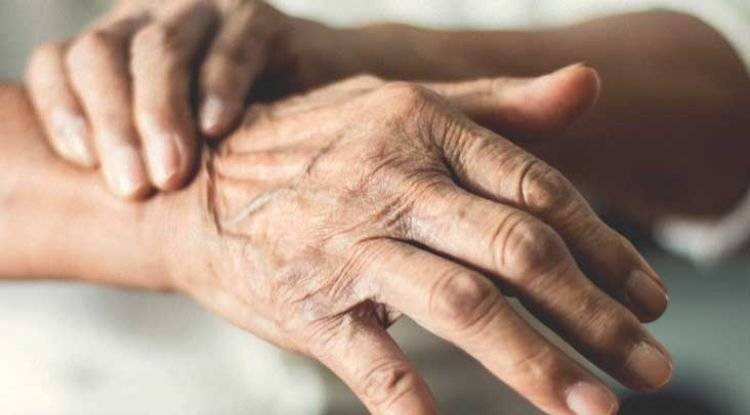Parkinson's Disease: Understanding the Basics, Symptoms, Treatments, and Research
**Introduction**
Parkinson's disease (PD) is a neurodegenerative disorder that predominantly affects movement. It is named after James Parkinson, the English physician who first described the condition in 1817. Over the years, our understanding of Parkinson's disease has grown significantly, yet there is still much to learn about its causes, progression, and effective treatments.
**Understanding Parkinson's Disease**
Parkinson's disease primarily affects a region of the brain called the substantia nigra, which is responsible for producing dopamine, a neurotransmitter crucial for controlling movement and coordination. The loss of dopamine-producing neurons in the substantia nigra leads to the characteristic motor symptoms associated with Parkinson's disease.
**Symptoms of Parkinson's Disease**
The symptoms of Parkinson's disease can vary from person to person and typically develop gradually over time. The primary motor symptoms include:
1. **Tremor**: A rhythmic shaking or trembling, often starting in the hands, fingers, or limbs at rest.
2. **Bradykinesia**: Slowness of movement, making simple tasks such as walking or getting out of a chair challenging.
3. **Muscle Rigidity**: Stiffness and resistance to movement in the limbs and trunk.
4. **Postural Instability**: Impaired balance and coordination, increasing the risk of falls, especially in later stages of the disease.
In addition to motor symptoms, Parkinson's disease can also cause non-motor symptoms, including:
- **Sleep disturbances**
- **Cognitive changes**
- **Depression and anxiety**
- **Loss of sense of smell (anosmia)**
- **Constipation**
**Diagnosis**
Diagnosing Parkinson's disease can be challenging, particularly in the early stages when symptoms may be subtle or non-specific. Healthcare professionals typically rely on a combination of medical history, neurological examination, and response to medication to make an accurate diagnosis. In some cases, neuroimaging techniques such as MRI or DaTscan may be used to help confirm the diagnosis and rule out other conditions with similar symptoms.
**Treatment Options**
While there is currently no cure for Parkinson's disease, several treatment options are available to manage symptoms and improve quality of life:
1. **Medications**: The primary treatment for Parkinson's disease involves medications that help replenish dopamine levels in the brain or mimic its effects. Commonly prescribed medications include levodopa, dopamine agonists, MAO-B inhibitors, and COMT inhibitors.
2. **Deep Brain Stimulation (DBS)**: DBS is a surgical procedure that involves implanting electrodes into specific areas of the brain to help regulate abnormal brain activity associated with Parkinson's disease. DBS can significantly reduce motor symptoms and medication requirements in some individuals.
3. **Physical Therapy**: Physical therapy and exercise programs tailored to the needs of individuals with Parkinson's disease can help improve flexibility, strength, balance, and mobility.
4. **Speech Therapy**: Speech therapy can be beneficial for individuals experiencing speech and swallowing difficulties, which are common non-motor symptoms of Parkinson's disease.
5. **Lifestyle Modifications**: Adopting a healthy lifestyle, including regular exercise, a balanced diet, and adequate sleep, can help manage symptoms and improve overall well-being.
**Current Research and Future Directions**
Researchers around the world are actively investigating various aspects of Parkinson's disease, including its underlying causes, disease progression, and potential treatments. Some areas of current research include:
1. **Genetics**: Studying the genetic factors that contribute to Parkinson's disease may provide insights into its pathogenesis and identify potential therapeutic targets.
2. **Neuroprotection**: Researchers are exploring strategies to protect and preserve dopamine-producing neurons in the brain, with the aim of slowing or halting disease progression.
3. **Stem Cell Therapy**: Stem cell therapy holds promise as a potential treatment for Parkinson's disease by replacing damaged neurons and restoring normal brain function.
4. **Biomarkers**: Identifying reliable biomarkers for Parkinson's disease could facilitate early diagnosis, monitor disease progression, and assess the effectiveness of therapeutic interventions.
5. **Precision Medicine**: Personalized treatment approaches based on individual genetic profiles and disease characteristics may improve treatment outcomes and reduce side effects.
**Conclusion**
Parkinson's disease is a complex and challenging condition that affects millions of people worldwide. While significant progress has been made in our understanding and management of the disease, there is still much work to be done to improve diagnostic methods, develop more effective treatments, and ultimately find a cure. Through continued research, collaboration, and advocacy, we can strive to enhance the lives of those living with Parkinson's disease and work towards a future free from its devastating effects.
---
This article provides a comprehensive overview of Parkinson's disease, covering its symptoms, diagnosis, treatment options, current research, and future directions. Let me know if you need further details on any specific aspect!


